Act 1
Act 1
Three kids in their haphazard troll costumes toddle off the stage and the detective is left standing alone. That's my cue.With all the confidence that I don't have, I sashay onto the stage in my dollar store witch's hat and black dress. I am instantly blinded by the stage lights which prevent me from making out any faces in the audience. The other schools' casts. The countless parents sporting video cameras. The teachers keeping a keen eye on their own herd of young children.I tell the detective the lines that I've rehearsed more times than I can count. I tell him that though I was the town witch, couldn't have committed the crime as I was at a parent-teacher conference for my son, Edward Cullen. It doesn't canonically make any sense, but laughter bubbles up from the crowd and triggers an unexpected wave of pride within me. I get through to my final cackle before I exit into the wings on the other side.That was the first time I acted onstage: a primary school play performed at a regional drama competition. And while I don't really remember the stage, the characters, or even the plot much at all, I was enthralled with the thrill of being in a theatre production. It was a thrill I would pursue time and time again throughout my schooling career.Growing up and going to school in Western Sydney, which, according to census data, contains Australia's most multicultural suburbs, the theatre space was always accessible. Albeit, drama was only offered for two years in high school, and many of our school productions featured white characters, but colour-blind casting is the norm when the entire audition room is made up of people of colour.I became comfortable in the theatre space. It was where precariously hot-glued cardboard sets took me out of the mundanity of a life entrenched in study and books. It was where I was free to yell into the endless black void of an audience about my personal anguishes intertwined with a prewritten script.It was one of the most freeing creative outlets I had.Until it locked me out.
Act 2
Act 2
It is one thing to recognise that a lack of diversity exists in Australian theatre. It is another thing altogether to experience it.Based on the few plays that I had been forced to watch by the Australian high school English curriculum, I knew that theatre was a primarily white industry that had an all-too-common habit of excluding faces like mine from the professional stage. Yet somehow, I had hoped that student theatre- the only form of theatre I had ever been involved in- would remain the exception.And it did seem that way at first.As I walked through the University of Sydney campus on Welcome Week, in my first foray outside of the western suburbs, the university's dramatic society and musical theatre society were all too excited to pop my name down, promising me opportunities to perform on stage and become part of their communities. Their audition packs (documents that described the roles and requirements of the casts for each show) boasted 'colour-blind' casting, and paragraphs that specifically encouraged Black, Indigenous and People of Colour (BIPOC) to audition.So I did. I performed in their shows, attended their theatre events and tried to immerse myself in this community I told myself I wanted to belong to. After all, the only prerequisite was that I loved theatre, which I knew I irrevocably fulfilled.Yet the harder I tried, the more I noticed an unspoken distance between me and the societies' largely white members. They were studying performance studies and had come from high schools with comprehensive drama programs. They had attended the theatre since they were children, watching their stories be told by characters that spoke and looked just like them. They had had an affordance I had not even recognised I had lacked: a passion that seemed to love them back.Being around them felt foreign because they never had to fight to exist in this community. They never had to do post-rehearsal Google searches for the theatre terms that the director had so callously thrown about. They never had to twist and turn a character's motivations in ridiculous spirals until they resembled someone they could vaguely relate to and hence play. They never had to look out into an audience and never see their parents because one of their biggest passions was in a language their parents barely spoke.And while the societies were perfectly friendly and happy to have a chat, I couldn't help but feel...alone.Then, two years ago, freshly out of COVID lockdown, I auditioned for, and was cast in the University of Sydney's People of Colour Revue. It was a comedy show, composed of a series of skits, written and performed by the cast, complete with an opening and closing musical number. It was the type of show that embraced the low budget and stakes of student theatre, and instead, let the hilarity and personalities of its cast shine. Most importantly, the show had a cast comprised exclusively of people of colour.For the first time, I found myself in a room filled entirely with artists of colour who had been given creative agency over a show. Over the next few weeks, we shared our stories and lived experiences, and wove them with comedy to form our sketches. We turned our shared BIPOC traumas into something that could be processed; into something we could make light of in the microcosm of our stage because we knew that outside, it could not be faced with laughter, it had to be faced with strength.Yet for moments we could also forget the pain that had brought us together, and devolve into simply students writing a ridiculously funny show. We wrote sketches that dared to ask the real questions like "How do muggers work in our cashless society?", "Would Grammarly improve your sexting life?", and "What happens if a Masterchef contestant had a trauma-free backstory?"I watched on performance nights, as audiences, with a bigger makeup of people of colour than I had ever seen, showed up in droves to support the show. The peals of laughter which filled the theatre not only created a sense of connection between the people of colour in the room, but they also, for many of us on the cast, validated that we belonged on the stage.USYD's PoC Revue showed me the rarity of safe spaces and accessibility for BIPOC in theatre. It reminds me how essential it is to tell the stories and welcome BIPOC audiences, in an industry that continues to both unconsciously and subconsciously perpetuate the centrality of whiteness. Award-winning Vietnamese-Australian director and writer Chi Vu writes that Australian theatre's white gaze sees the cultural and linguistic practices of white Australians as "natural and universal, thus free from any ethnic markers". So the stories we see dominating our theatres, while not explicitly exclusionary of BIPOC and their stories, implicitly feature roles only imagined for white people.This is why African-American playwright August Wilson argues that colourblind casting, which casts characters regardless of the actors' race, while it appears to diversify theatre, only truly succeeds in giving a new visual to someone else's racial and cultural experiences. It does little to establish people of colour and their experiences in the theatre sphere.From an actor's perspective, it also often makes playing the characters uncomfortable as it often means dismissing our own stories, as we struggle to embody and understand the motivations in a white narrative. In my first year of university, I auditioned for a student play that revolved around several students living in a sharehouse in Marrickville, which has a primarily white ethnic makeup. And though it boasted colourblind casting, the only character I felt I could play, and got a callback for was the narrator.Australian theatre still sees its performers of colour as only valuable as a point of difference. Our value on stage comes from the presumed white audience's entitlement to being "enriched" by our experiences, according to cultural researcher Roanna Gonsalves. We are tolerated on stage in narratives that fail to truly interrogate the prevalence of whiteness, while also touting our presence as superficial inclusions of diversity. In the cases that BIPOC create their own safe spaces, the productions are pushed into the offshoots of indie theatre, as the separation between 'ethnic' and 'mainstream' theatre persists in the industry, because, well, how could the stories of BIPOC possibly fit into the Australian story?In the game of theatre, we are merely cards to be dealt at the will of their hands.So we put on the performance of race.
Text
Intermission
Text
The Final Act
I was in USYD's PoC Revue cast for two years. With a full-time career in my other interests looming in the distance, I am unlikely to ever act again. Yet as I transition from being on the stage, to permanently in front of it, I cannot help but have hope for the future of Australian theatre.It's a hope that comes from seeing BIPOC being effectively cast as iconic characters, in stories that do not diminish their lived experiences. It assures me that the next generation of artists of colour gets to grow up seeing their faces, their stories, and their voices on stage.It's a hope that comes from watching the vast variety of exceptional theatre generated by BIPOC in indie Australian theatre, as they build and normalise safe spaces within the industry. It tells me that it is possible to create theatre experiences for audiences and BIPOC creatives alike, that can be both fulfilling and entertaining.It's a hope that comes from my time with PoC Revue. I witnessed first-hand the sheer resilience of the next generation of BIPOC and the vibrance they can bring to the theatre scene if given a chance. And if they're anything to go off, I know they will make that chance.So I like to think of this project as less of a critic's letter to what has been, and more of a love letter to what will be.Because I have hope, that the next generation is about to step out of that square.
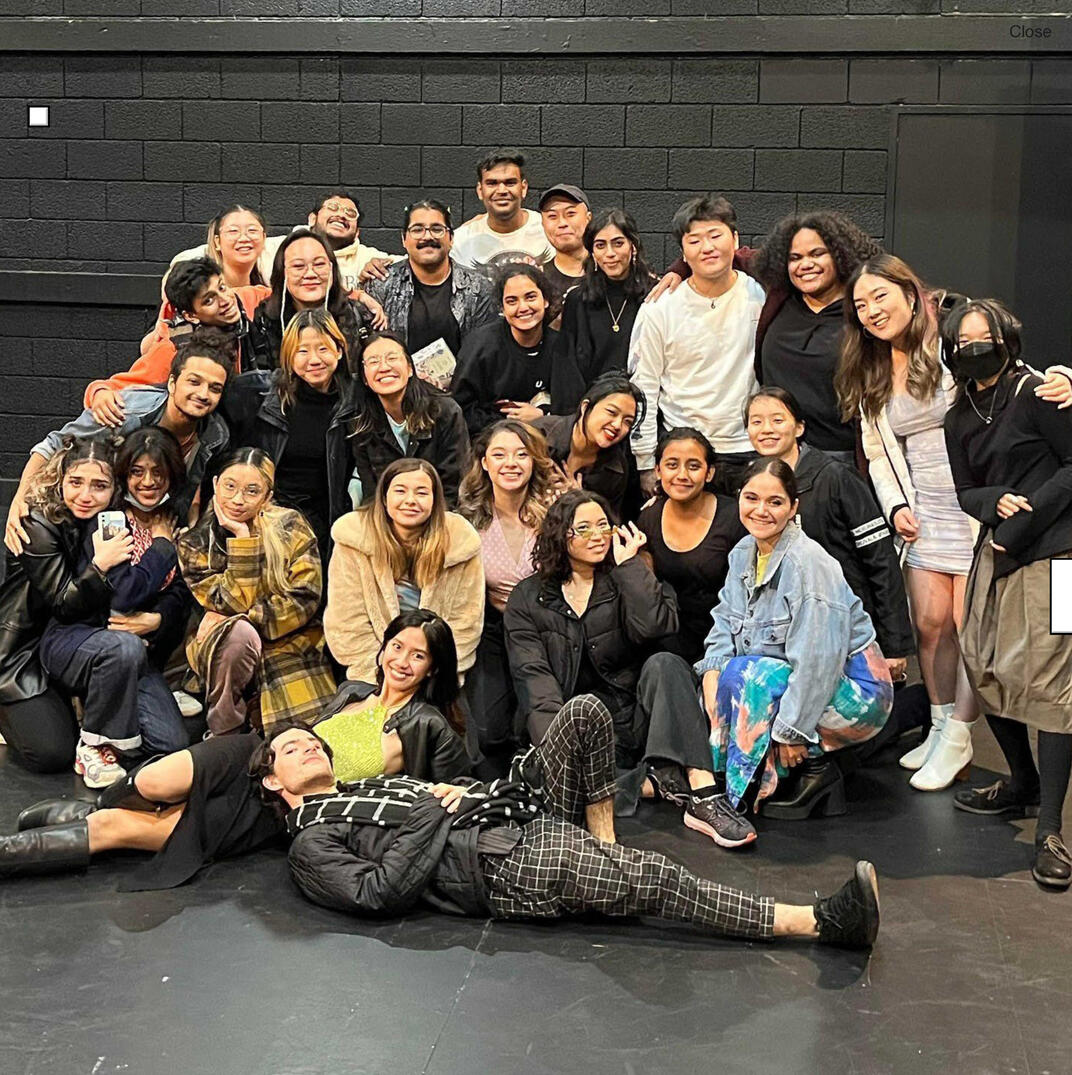
The cast and crew of PoC Revue 2022. I am pictured second from the right.